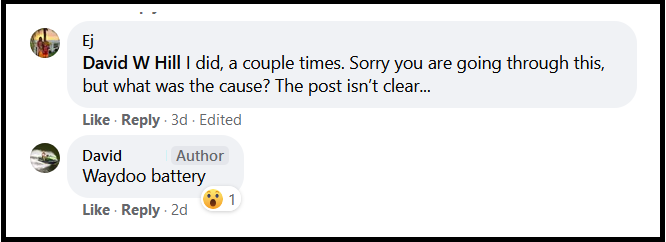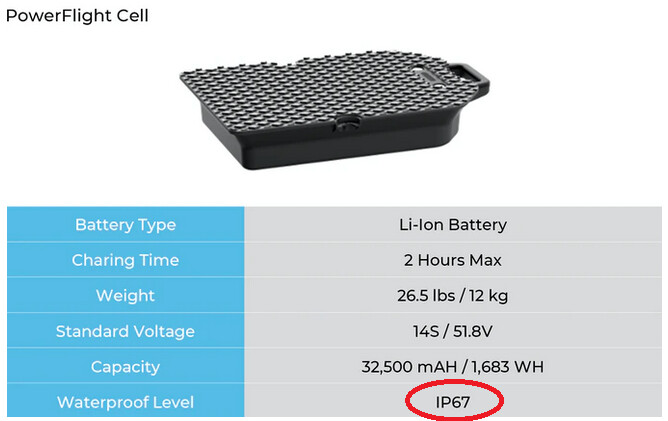I just want to make one point; it’s a numbers game. You can’t stop a fire starting. But you can design to manage it.
So the rate of failure in Korean cells is ~1 in 5,000,000. Typical pack has168 cells, means you get a trigger cell every 30,000 packs.
Rate of leaks in packs from real use ~1 in 1,00 perhaps? Probably higher. Salt water is known to trigger fires.
Rate of component failure in protection circuits? 1 in 100,000 circuit boards. Then they have no protection in charge, discharge, etc.
The list goes on, and you can add all these up to see that it’s going to be a portion of eFoils, eJets, eWhatever’s each year that have potential to catch fire.
What is really important is how the system is designed to deal with, detect, contain and stop a fire.
That’s the real question. Is that Battery design to survive an inevitable trigger cell fire? I don’t know of a single battery that has an infallible seal? Or redundant seals.
I haven’t seen one that has a way to deal with the pyro-venting you get when a cell decides to become a firework. Or features to stop sideways propagation of the fire.
I haven’t seen material selection to keep the seals intact when hot in the sun, or to deal with the heat from failure and not add more fuel to the fire.
All the batteries I’ve seen are really wild-west, done quick. Its a statistical certainty that a bad fire happens in a bad place.


 unbelievable
unbelievable




